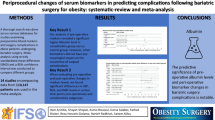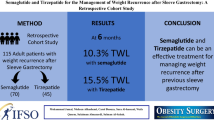Abstract
Background
Metabolic syndrome (MetS) is defined as the concomitant disease process of obesity and at least two of the following variables: diabetes, hypertension, hypertriglyceridemia, or reduced high-density lipoprotein. These entities are well established as risk factors for complications following surgery. Obese patients are particularly prone to the development of MetS. The authors therefore aimed at elucidating the impact of MetS on the perioperative panniculectomy outcomes.
Methods
The American College of Surgeons National Surgical Quality Improvement Program database was analyzed for all primary procedures of panniculectomy from 2010 through 2015. The cases were stratified based on the presence or absence of MetS and evaluated for demographic data, intraoperative details, and their morbidity and mortality within 30 days after surgery.
Results
A total of 7030 cases were included in this study. Patients with MetS (6.2%) were of significantly worse health, required more emergency admissions (p = 0.022), longer hospitalization (p < 0.001), and more frequently inpatient procedures (p < 0.001) compared to the control group without MetS (3.8%). Plastic surgery was the predominant specialty operating on 79.5% of all cases. Surgical (23.3 vs. 8.7%) complications, readmission (8.7 vs. 3.0%), and reoperations (6.9 vs. 3.1%) rates were all significantly higher in patients with MetS that those without (p < 0.001). One fatality occurred in each cohort (0.23 vs. 0.02%, p = 0.010).
Conclusion
Comorbidities are not uncommon in patients undergoing panniculectomy, especially in those diagnosed with MetS. Health-care providers need to be aware of the increased morbidity and mortality in this high-risk subgroup and need to consider preoperative optimization and management before proceeding with surgery.
Level of Evidence III
This journal requires that authors assign a level of evidence to each article. For a full description of these Evidence-Based Medicine ratings, please refer to the Table of Contents or the online Instructions to Authors www.springer.com/00266.
Similar content being viewed by others
References
Alberti KG, Zimmet P, Shaw J (2006) Metabolic syndrome–a new world-wide definition. A consensus statement from the international diabetes federation. Diabet Med 23(5):469–480
Ford ES (2005) Prevalence of the metabolic syndrome defined by the International Diabetes Federation among adults in the U.S. Diabet Care 28(11):2745–2749
Bankoski A, Harris TB, McClain JJ et al (2011) Sedentary activity associated with metabolic syndrome independent of physical activity. Diabet Care 34(2):497–503
Riccardi G, Rivellese AA (2000) Dietary treatment of the metabolic syndrome–the optimal diet. Br J Nutr 83(1 Suppl):143–148
Gallagher S, Gates JL (2003) Obesity, panniculitis, panniculectomy, and wound care: understanding the challenges. J Wound Ostomy Cont Nurs 30(6):334–341
Igwe D Jr, Stanczyk M, Lee H, Felahy B, Tambi J, Fobi MA (2000) Panniculectomy adjuvant to obesity surgery. Obes Surg 10(6):530–539
Cooper JM, Paige KT, Beshlian KM, Downey DL, Thirlby RC (2008) Abdominal panniculectomies: high patient satisfaction despite significant complication rates. Ann Plast Surg 61(2):188–196
Friedland JA, Maffi TR (2008) MOC-PS(SM) CME article: abdominoplasty. Plast Reconstr Surg 121(4 Suppl):1–11
Hillenbrand A, Henne-Bruns D, Wolf AM (2012) Panniculus, giant hernias and surgical problems in patients with morbid obesity. GMS Interdiscip Plast Reconstr Surg DGPW 1
Arthurs ZM, Cuadrado D, Sohn V et al (2007) Post-bariatric panniculectomy: pre-panniculectomy body mass index impacts the complication profile. Am J Surg 193(5):567–570 discussion 570
Wright JD, Rosenbush EJ, Powell MA et al (2006) Long-term outcome of women who undergo panniculectomy at the time of gynecologic surgery. Gynecol Oncol 102(1):86–91
Manahan MA, Shermak MA (2006) Massive panniculectomy after massive weight loss. Plast Reconstr Surg 117(7):2191–2197 discussion 2198–2199
Leahy PJ, Shorten SM, Lawrence WT (2008) Maximizing the aesthetic result in panniculectomy after massive weight loss. Plast Reconstr Surg 122(4):1214–1224
Chung CW, Kling RE, Sivak WN, Rubin JP, Gusenoff JA (2014) Risk factors for pannus formation in the post-bariatric surgery population. Plast Reconstr Surg 133(5):623e–627e
American college of surgeons (2015) ACS NSQIP participant use data file. https://www.facs.org/~/media/files/quality%20programs/nsqip/nsqip_puf_user_guide_2015.ashx. Accessed 03 March 2017
American Medical Association (2016) Cpt 2017 Professional Edition. 4th edn. American Medical Association, Chicago
World Health Organization (1994) The ICD-10 classification of mental and behavioural disorders: clinical descriptions and diagnostic guidelines, 10th edn. World Health Organization, New York
Kaur J (2014) A comprehensive review on metabolic syndrome. Cardiol Res Pract
Bhayani NH, Hyder O, Frederick W et al (2012) Effect of metabolic syndrome on perioperative outcomes after liver surgery: a national surgical quality improvement program (NSQIP) analysis. Surgery 152(2):218–226
Gage MJ, Schwarzkopf R, Abrouk M, Slover JD (2014) Impact of metabolic syndrome on perioperative complication rates after total joint arthroplasty surgery. J Arthroplasty 29(9):1842–1845
World Health Organization. Obesity and overweight–Fact Sheet (2016). http://www.who.int/mediacentre/factsheets/fs311/en/. Accessed 03 Aug 2017
Dreifuss SE, Rubin JP (2016) Insurance coverage for massive weight loss panniculectomy: a national survey and implications for policy. Surg Obes Relat Dis 12(2):412–416
Colabianchi V, de Bernardinis G, Giovannini M, Langella M (2015) Panniculectomy combined with bariatric surgery by laparotomy: an analysis of 325 cases. Surg Res Pract
Singh KA, Losken A (2011) The use of validated body image indices following panniculectomy. Ann Plast Surg 66(5):537–539
Aguilar M, Bhuket T, Torres S, Liu B, Wong RJ (2015) Prevalence of the metabolic syndrome in the united states, 2003-2012. JAMA 313(19):1973–1974
Marquis K, Maltais F, Duguay V et al (2005) The metabolic syndrome in patients with chronic obstructive pulmonary disease. J Cardiopulm Rehabil 25(4):226–232 discussion 233–224
Gluba A, Mikhailidis DP, Lip GY, Hannam S, Rysz J, Banach M (2013) Metabolic syndrome and renal disease. Int J Cardiol 164(2):141–150
Razzouk L, Muntner P (2009) Ethnic, gender, and age-related differences in patients with the metabolic syndrome. Curr Hypertens Rep 11(2):127–132
Pomares J, Mora-García G, Palomino R, De León Y, Gómez-Alegría C, Gómez-Camargo D (2014) Metabolic syndrome and perioperative complications during scheduled surgeries with spinal anesthesia. Open J Anesthesiol 04(07):167–176
Mioton LM, Buck DW 2nd, Gart MS, Hanwright PJ, Wang E, Kim JY (2013) A multivariate regression analysis of panniculectomy outcomes: does plastic surgery training matter? Plast Reconstr Surg 131(4):604e–612e
Koolen PG, Ibrahim AM, Kim K et al (2014) Patient selection optimization following combined abdominal procedures: analysis of 4925 patients undergoing panniculectomy/abdominoplasty with or without concurrent hernia repair. Plast Reconstr Surg 134(4):539e–550e
Acarturk TO, Wachtman G, Heil B, Landecker A, Courcoulas AP, Manders EK (2004) Panniculectomy as an adjuvant to bariatric surgery. Ann Plast Surg 53(4):360–366 discussion 367
Zannis J, Wood BC, Griffin LP, Knipper E, Marks MW, David LR (2012) Outcome study of the surgical management of panniculitis. Ann Plast Surg 68(2):194–197
Wolters U, Wolf T, Stutzer H, Schroder T, Pichlmaier H (1997) Risk factors, complications, and outcome in surgery: a multivariate analysis. Eur J Surg 163(8):563–568
Tang R, Chen HH, Wang YL et al (2001) Risk factors for surgical site infection after elective resection of the colon and rectum: a single-center prospective study of 2,809 consecutive patients. Ann Surg 234(2):181–189
Hawn MT, Houston TK, Campagna EJ et al (2011) The attributable risk of smoking on surgical complications. Ann Surg 254(6):914–920
Davies SJ, Wilson RJ (2004) Preoperative optimization of the high-risk surgical patient. Br J Anaesth 93(1):121–128
Acknowledgment
American College of Surgeons National Surgical Quality Improvement Program and the hospitals participating in the ACS NSQIP are the source of the data used herein; they have not verified and are not responsible for the statistical validity of the data analysis or the conclusions derived by the authors.
Author information
Authors and Affiliations
Corresponding author
Ethics declarations
Conflict of interest
None of the authors, nor their close family members, have a financial interest in any of the products, devices, or drugs mentioned in this manuscript. Furthermore, the authors declare that no commercial associations or financial disclosures exist that might pose or create a conflict of interest with information presented in this manuscript. No funding was received for the work presented in this manuscript.
Ethical Approval
The work described in this manuscript was approved by the Houston Methodist Hospital’s institutional review board (IRB, protocol number Pro00011704). The authors adhered to the Declaration of Helsinki at all times. No informed consent was obtained as the patient data from the American College of Surgeons National Surgical Quality Improvement Program are only available in a de-identified format.
Rights and permissions
About this article
Cite this article
Zavlin, D., Jubbal, K.T., Balinger, C.L. et al. Impact of Metabolic Syndrome on the Morbidity and Mortality of Patients Undergoing Panniculectomy. Aesth Plast Surg 41, 1400–1407 (2017). https://doi.org/10.1007/s00266-017-0952-6
Received:
Accepted:
Published:
Issue Date:
DOI: https://doi.org/10.1007/s00266-017-0952-6




